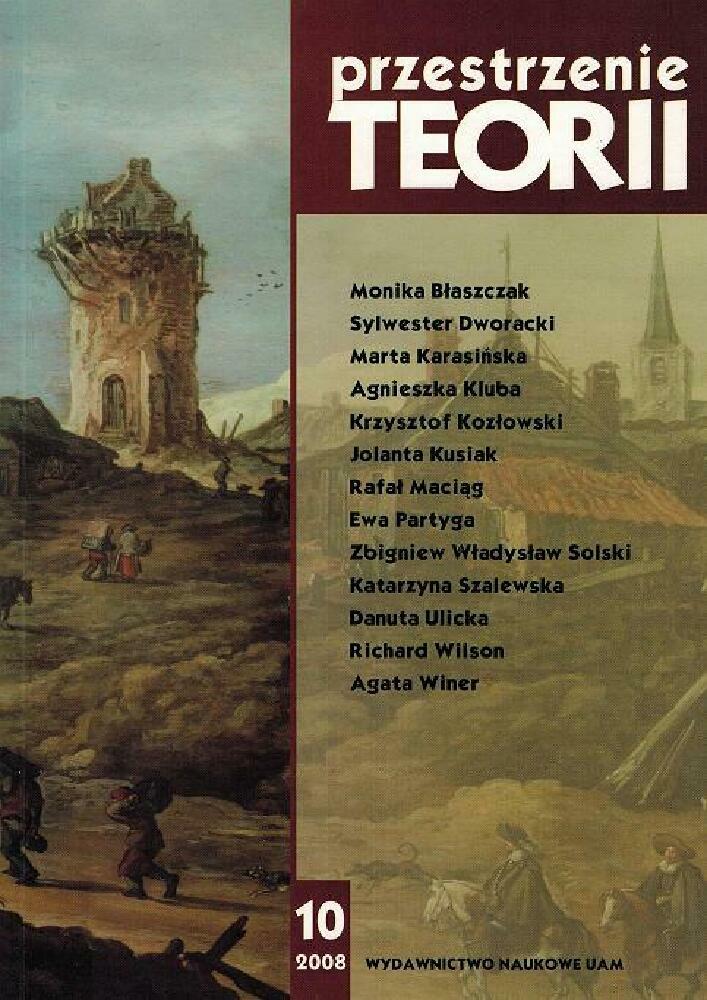Abstrakt
Part ONE. This dissertation is devoted to the inspiration of Maria Pawlikowska-Jasnorzewska by the philosophy of the East, which she got to know through Arthur Schopenhauer's writings. The first part contains a description of the manner in which the poet interpreted the inconsistency of the conception of the German philosopher who tried to combine in one all the elements of various religious and philosophical trends coming from India. We can look on Maria Pawlikowska-Jasnorzewska's works of the pre-World War II years as on a peculiar literary adaptation of these various ideas, and, to be more exact, as on an attempt to construct such a poetic world in which there might be a coordination between diverse currents determined by the Brahminian and the Buddhist ideas. In Pawlikowska-Jasnorzewska's early poems affirmation, paradox, (self/auto)irony and degradation of loftiness are concurrent, which are characteristic of the Buddhist attitude to the world and there is also avoidance of reflection of ethical nature so characteristic of Brahminism.
Part two. In the second part of the dissertation on the influence of Indian philosophy on Maria Pawlikowska-Jasnorzewska's views, these elements of her writings are analysed (such as miniaturisation, condensation, formal rigour, intellectualisation of lyricism), which reflected her way of thinking. The description also contains the next stage of writing activity of the author of Krystalizacje [Crystallisations] during which the poet gave up the affirmative amoralism, and in her poetry occurred a confrontation of the negativist assumptions of Brahminism with the Buddhist imperative of mercy. Along with the acceptance of the evaluative perspective in Pawlikowska-Jasnorzewska's poetic diction elements of gnostic rhetoric began to appear in which she followed Schopenhauer, and in her writings the process of "decay of the poetic form" began to be more and more visible, which was described by critics, and which led through the poetics of a sketch and fragment in her later prewar works to the notebook-like last recordings of the war period.
Licencja
Autorzy
Autorzy tekstów przyjętych do publikacji w czasopiśmie „Przestrzeniach Teorii” są zobowiązani do wypełnienia, podpisania i odesłania na adres redakcji umowy o udzielenie nieodpłatnej licencji do utworów, z zobowiązaniem do udzielania sublicencji CC.
Zgodnie z umową, autorzy tekstów opublikowanych w czasopiśmie „Przestrzeniach Teorii” udzielają Uniwersytetowi im. Adama Mickiewicza w Poznaniu niewyłącznej i nieodpłatnej licencji oraz zezwalą na użycie sublicencji Creative Commons Attribution-NonCommercial-NoDerivatives 4.0 International (CC BY-NC-ND 4.0).
Autorzy zachowują prawa do dalszego, swobodnego rozporządzania utworem.
Autorzy, którzy wykorzystują w swoim tekście cudze utwory (np. ilustracje, fotografie) proszeni są o dostarczenie do redakcji czasopisma zgodę na publikację od uprawnionych podmiotów.
Użytkownicy
Zainteresowani użytkownicy internetu uprawnieni są do korzystania z utworów opublikowanych po 2015 roku „Przestrzeniach Teorii” tylko w calach niekomercyjnych, pod następującymi warunkami:
- uznanie autorstwa - obowiązek podania wraz z rozpowszechnionym utworem, informacji, o autorstwie, tytule, źródle (odnośniki do oryginalnego utworu, DOI) oraz samej licencji;
- bez tworzenia utworów zależnych - utwór musi być zachowany w oryginalnej postaci, nie można bez zgody twórcy rozpowszechniać np. tłumaczeń, opracowań.
Do wszystkich tekstów opublikowanych przed 2015 r. prawa autorskie są zastrzeżone.
Inne
Uniwersytet im. Adama Mickiewicza w Poznaniu zachowuje prawo do czasopisma jako całości (układ, forma graficzna, tytuł, projekt okładki, logo itp.).
